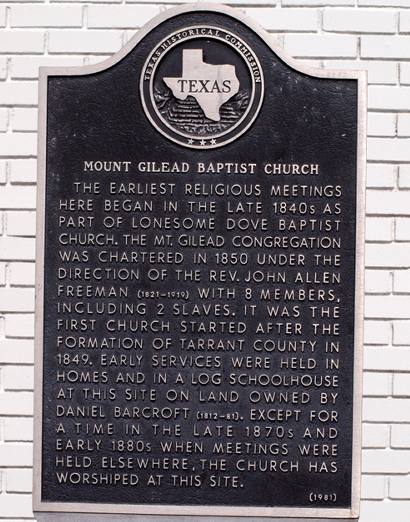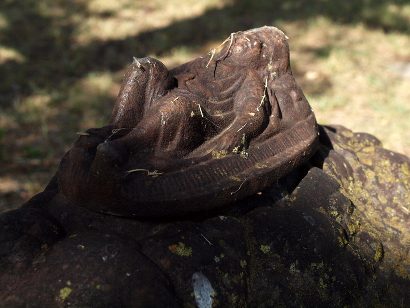Keller, Texas, Tarrant County. (original) (raw)
History on a Pinhead
Settled in the early 1850s, things didn't really get started until the late 1870s when the Texas and Pacific Railroad was approaching. People anticipated the railroad's arrival by moving near the proposed route. The community was first called Athol. In 1881 H. W. Wood donated land for the Athol townsite and citizens eager for a permanent railroad connection agreed to change the name of their town - if only the railroad would stop. The railroad representative was named Keller - and that became the new name. Keller, Texas was in use by 1882. The town was granted a post office by 1888.
Keller is now part of the Dallas-Fort Worth Airport complex . No early population figures are available, but in 1990 the town had 13,683 residents which has doubled to over 27,000 in 2000.
Keller, Texas Historic Landmarks:

Mount Gilead Baptist Church
Photo courtesy David Cole, July 2011

Mount Gilead Baptist Church Historical Marker
Photo courtesy David Cole, July 2011
Historical Marker
Mount Gilead Baptist Church
The earliest religious meetings here began in the late 1840s as part of Lonesome Dove Baptist Church. The Mt. Gilead Congregation was chartered in 1850 under the direction of the Rev. John Allen Freeman (1821-1919) with 8 members, including 2 slaves. It was the first church started after the formation of Tarrant County in 1849. Early services were held in homes and in a log schoolhouse at this site on land owned by Daniel Barcroft (1812-81). Except for a time in the late 1870s and early 1880s when meetings were held elsewhere, the church has worshiped at this site.
(1981)
Photo courtesy David Cole, July 2011
Pioneer Stone Burial Cairns Marker
Bancroft Road at J.T. Ottinger Rd.,
at Mount Gilead Cemetery
Photo courtesy David Cole, July 2011
Historical Marker
Pioneer Stone Burial Cairns
Scattered throughout many of the pioneer cemeteries in Texas are unusual stone structurers, or burial cairns, built by the early settlers to memorialize their dead. Primarily surface structures of native stone, the cairns vary in design and workmanship. Their use, however, is representative of traditional burial customs prevalent in the South during the eighteenth and nineteenth centuries. Although their specific purpose and origin are subject to theory, cairns such as these are outstanding examples of pioneer lore and tradition.
1983

Dr. Pepper mural
Photo courtesy CM, March 2007
Texas Escapes, in its purpose to preserve historic, endangered and vanishing Texas, asks that anyone wishing to share their local history, stories, landmarks and vintage/historic photos, please contact us.

